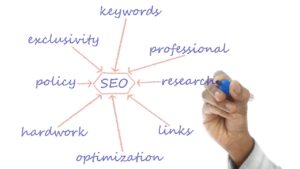B2B Lead Generation
The variety of marketing strategies used by businesses today is vast. Whether you%u2019re looking to attract people to your website, a physical location, or another form of marketing, there are a lot of options. However, lead generation is one of the most crucial parts of marketing.
Lead generation, also referred to as lead nurturing, is the process of building a relationship with potential customers before they become interested in your product or service.
The more leads you have, the higher your chances of selling to future customers. In this article, we will discuss how to generate more leads for your business.
We will discuss how to build a lead nurturing strategy, create a lead nurturing funnel, and use email marketing to generate leads.
What is a B2B Lead Generation nurturing strategy?
Lead generation is the process of obtaining contact information for potential customers in order to build a relationship with them. There are many different types of lead generation strategies, and one of the most common is lead nurturing.
Lead nurturing is a process of building a relationship with your potential customer. It usually consists of three phases: qualification, engagement, and conversion.
The lead nurturing process is an effective way to increase the number of leads you generate.
How to build a lead nurturing funnel
There are many different ways that you can generate leads for your business, but you should always include a lead nurturing funnel in your lead generation strategy.
A lead nurturing funnel is a series of emails that are sent out to your leads to help them get fully engaged with your business and the products that you have to offer.
In order to build a lead nurturing funnel, you should start by building a list of leads. You can do this through a variety of different means, including through your website, social media, and other methods. Once you have a list of leads, you should send them an email to introduce them to your business and to get them to sign up for a trial of your product.
This email should be sent out shortly after the lead signs up. You should also send a follow-up email about a week later and then send another follow-up email about a month later to remind them about your trial.
How to use email marketing to generate leads
Lead generation is a process that helps you acquire new customers for your business. There are many ways you can generate leads for your business.
One of the most effective ways is through email marketing. Email marketing is a great way to promote your business because it is very effective and easy to use.
One of the best ways to use email marketing to generate leads is to use a drip campaign. This involves sending out an email to your list every few days, with a new offer or piece of content that is relevant to your business.
You can also use autoresponders to keep in touch with your customers on a more regular basis. Using these techniques will help you generate leads for your business.
Conclusion.
Lead generation is the process of identifying, qualifying, and converting prospects into leads. There are many different lead generation strategies for businesses to use in order to generate more leads for their business. Here are some tips for B2B lead generation:
- Create a list of the top 10 industries you want to target.
- Create a list of the top 10 stages in the buying process for your target industry.
- Create a list of the top 10 companies in your industry.
- Create a list of the top 10 companies in the top 10 industries you want to target.
- Create a list of your top 10 competitors.
- Find out which of your competitors’ customers are more likely to buy from you.
- Find out which of your competitors’ customers are more likely to buy from you based on their buying stage.
- Find out which of your competitors’ customers are more likely to buy from you based on their buying stage and industry.
- Find out which of your competitors’ customers are more likely to buy from you based on their buying stage, industry, and company.
- Find out which of your competitors’ customers are more likely to buy from



